In 1997, Jay Worth set foot in the visual effects industry, marking the beginning of a remarkable career path. His contributions have graced numerous projects, notably Alias, Person of Interest, Westworld, and The Peripheral.
Can you briefly outline your background in visual effects?
I started working with Kevin Blank on season five of Alias. It was exciting first project to get to work on. Things were very different back then in the days of broadcast television. We had so many episodes, less shots and less money, but still a demanding visual bar to live up to with what JJ had created. It’s really where I fell in love with visual effects. From there, I got to work with Bad Robot for a number of years, which is where I was lucky enough to meet Jonah on Person Of Interest almost 14 years ago and grateful have been able to get to work with him on all of Kilter‘s projects since then. It’s been an extraordinary and wonderful ride.
What was it like collaborating with Director Jonathan Nolan on this project?
Collaborating with Jonah is inspiring. I’m always learning something, being asked to look at things from a new perspective, pushing my artists and vendors and new and challenging ways. He really does see the world and what’s coming next from a unique perspective and it’s really fun to work with him to bring those visions and visuals to life.
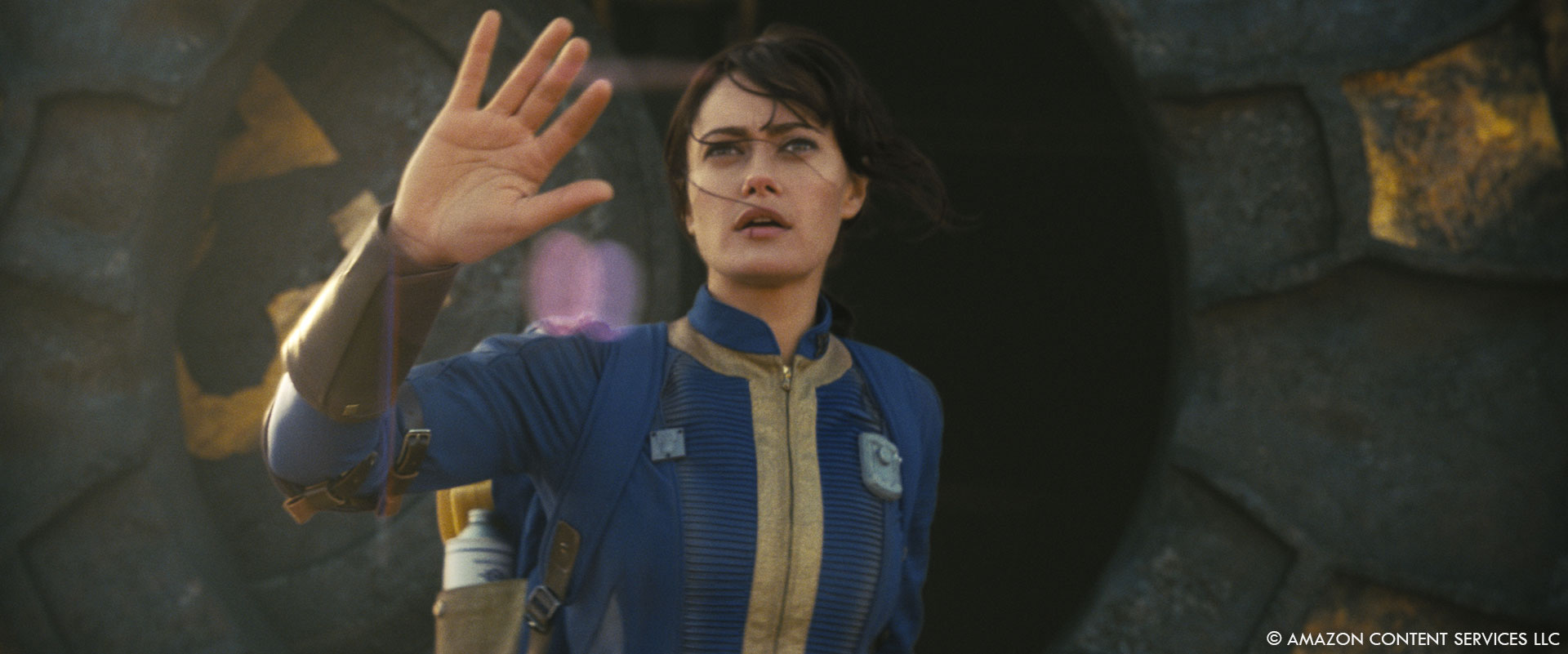
Can you discuss how you selected vendors and distributed tasks among them?
I love having trusted vendors. I’ve built relationships with some of my vendors going back all the way to my start of my career. Specifically, Tom Mahoney and CoSA VFX I’ve worked with on almost every project since I started supervising 16 years ago. So, one of the reasons I can say yes early on in prep is because I’m already picturing who I want to work on specific things. I’ve loved working with Important Looking Pirates in Sweden going all the way back to season one of Westworld. We did some very intricate CG and digital human work over the years and knew I could trust them with the cyclops as well as a host of other remarkable affect the season. Similarly, I fell in love with the hard surface work that RISE in Germany did for us on Westworld and was able to utilize those talents for the season on Fallout along with their exceptional environment work. And collaborating with the team at Framestore Montreal for the creatures has been fantastic. And over the past few years, I started working with the team from Refuge VFX in Oregon and they really did an outstanding job on our radroach along with numerous environments throughout the season.
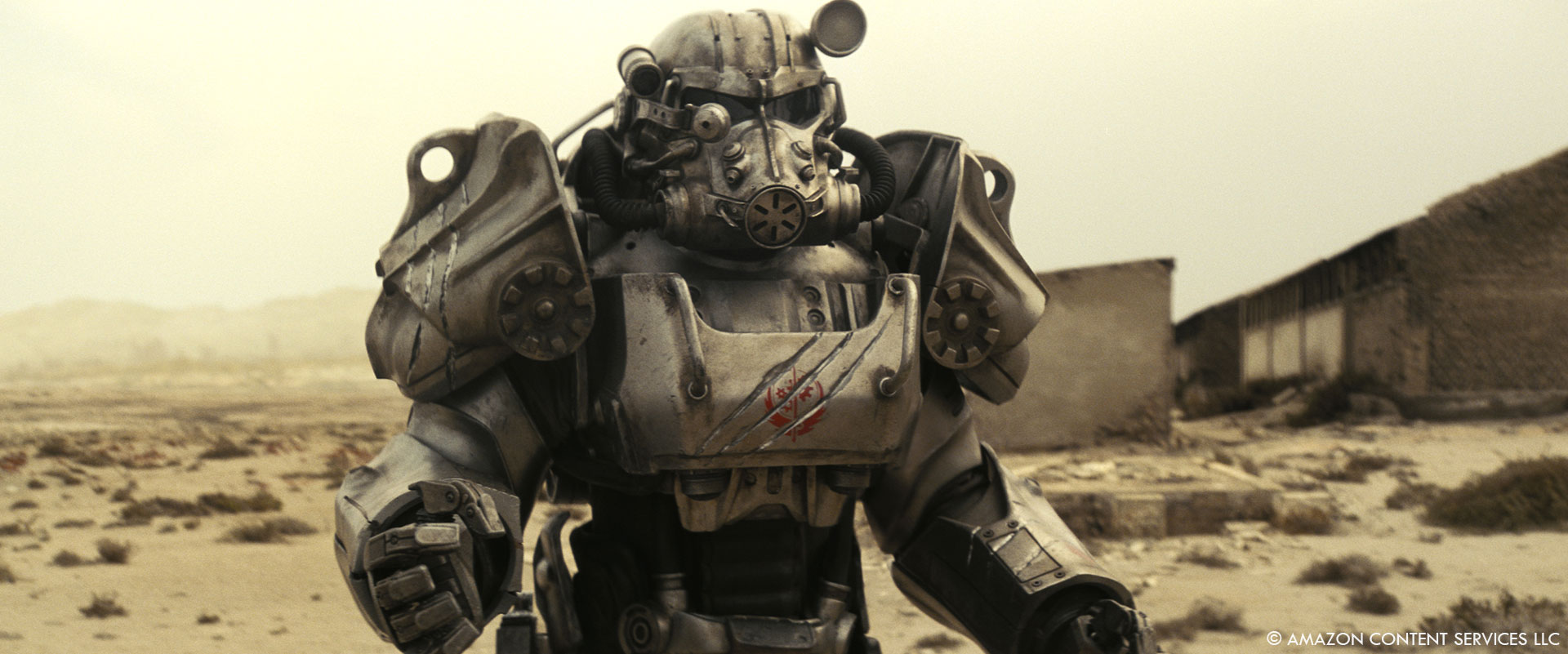
At the same time, I’m always looking for new partners as well and the team from One of Us did some amazing work with environments along with my good friends with the team from Mavericks VFX. I started working with on 11/22/63 and once again they did some wonderful work with environments. And I am also open to surprises – we entertained a number of options with how to remove the Ghoul’s nose – and had a number of vendors trying tests on it. We got a few of the shots and I love doing this – but I strip off the vendor names and show them to producers and Futureworks in India was picked. I have loved working with them for going on 10 years but they have primarily done 2D and comp work for me – but it was exciting to see them step up and delivery 500+ Ghoul nose shots in a ton of various lighting and positional environments – it was really incredible. It all comes down to relationships and trust and collaboration.
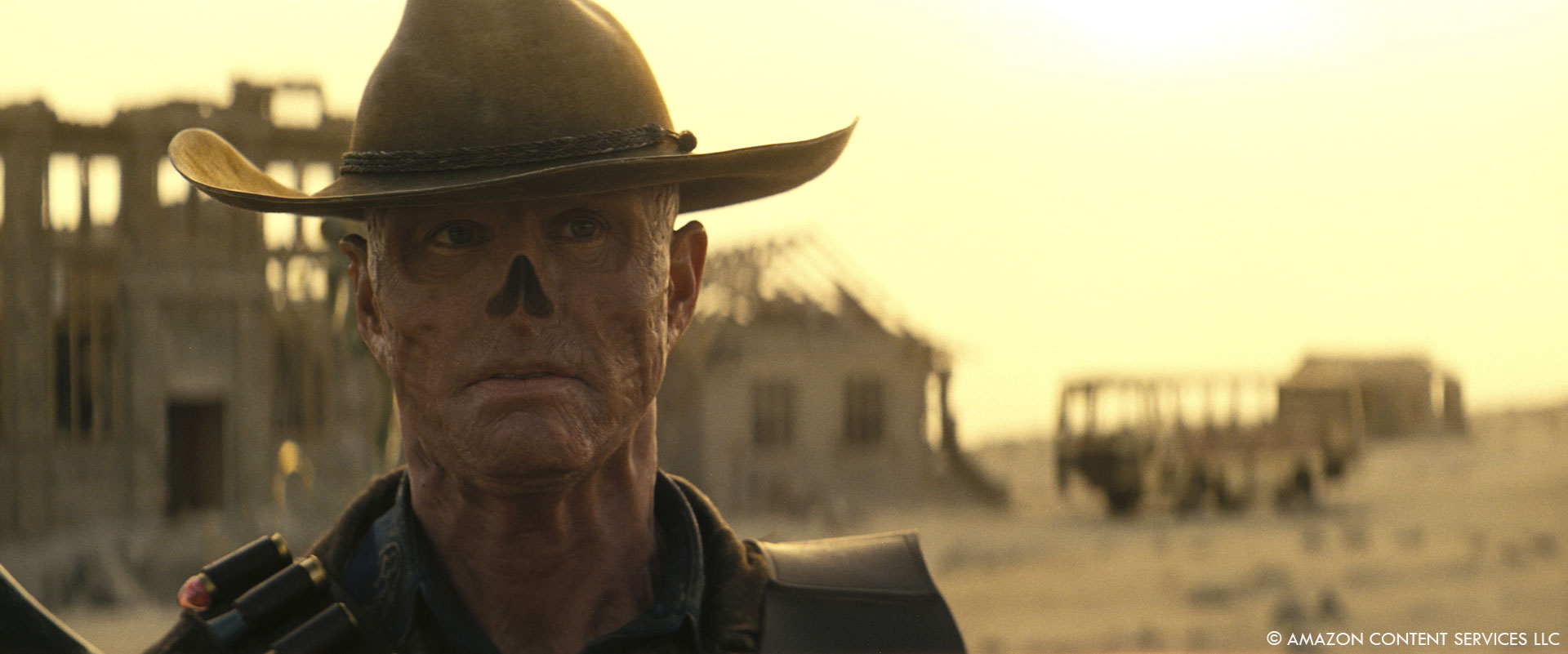
How did you tackle the challenge of depicting post-apocalyptic environments?
It always starts with locations and production design. I’ve loved working and collaborating with Howard Cummins for years and it’s incredibly satisfying to connect and build these worlds together. It’s been fun to develop a shorthand over the years along with a trust of knowing who is doing what. He is such an spectacular designer and world builder – and he took this deep source material and was able to create something beautiful and unique. We both are given a lot of freedom to take the ideas and run with them. We continually collaborate throughout the project in terms of design, feel, and execution. But I feel like I’m always just building off of the locations we start with and Howard’s design to build out these worlds.
Besides video games, what were your primary sources of inspiration?
I am constantly collecting visual reference, weird YouTube clips and anything that inspires me. Nature and other artists continual inspire me – but primarily, it really was the game and Howard’s designed. The games themselves are such an incredibly rich playground to play in, we didn’t have to stray very far from that. It was really fun to continually be able to come back to the source material. My VFX team had a bullpen area, and it all times we had various play through of different video games From Fallout playing. It was fascinating to see the variety of environments, characters, vehicles, and creatures throughout the six different games and lean into those as we were working on the shots.
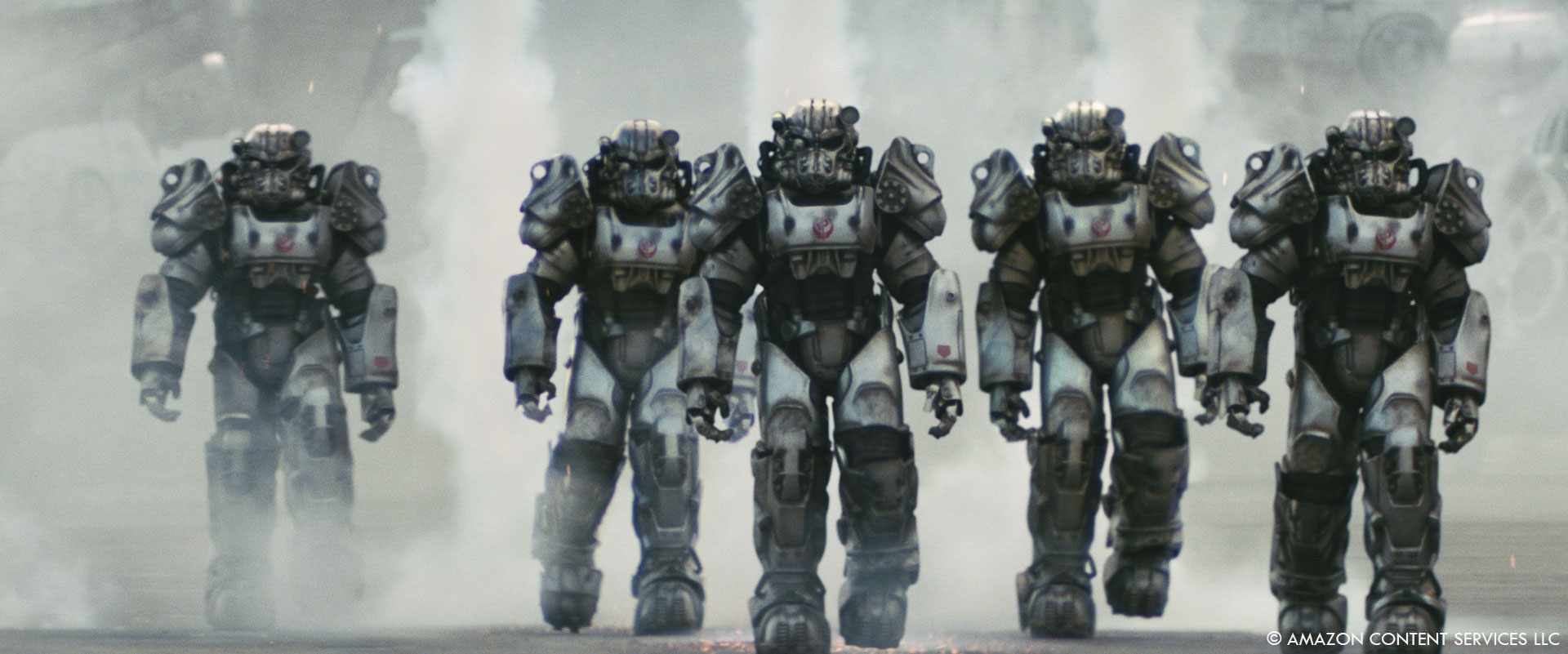
Could you explain the techniques used to alter landmarks and landscapes digitally for a post-nuclear setting?
We use lots of photographic reference for Los Angeles and then build almost everything in 3D. Early on I was a little hung up to be honest with trying to ground things in reality. Having grown up in Los Angeles authenticity was very important to me, but it ended up handicapping me early with following Lucy on this journey across the wasteland. However, we were given a lot of freedom by Jonah, Geneva and Graham to explore how to utilize iconic landmarks and build them into the environments in a way that felt seamless and real while also feeling like they belong in Los Angeles. We really took our queue from the story itself and Lucy ‘s journey across the wasteland from the Santa Monica pier all the way to the Griffith observatory. It was a lot of fun to play with landmarks and this urban environment while not being married too much to exactness in terms of how far things were from each other. The biggest thing we did was add scale and scope to give Los Angeles more size and breadth.
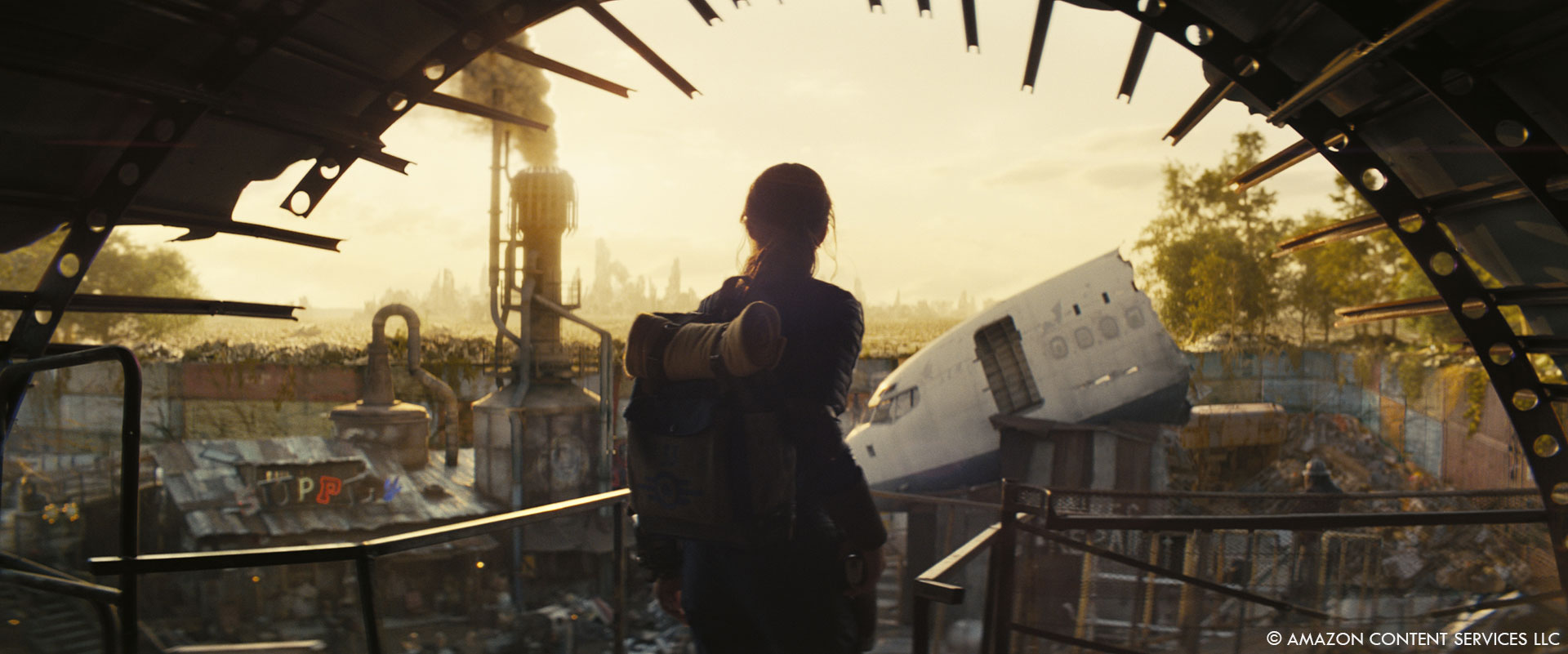
Can you elaborate on the creative process behind the visual effects used to bring Fallout’s creatures to life, from initial concept art to final animation?
Creatures were a lot of fun this season. The game features a Yao Gui and a Gulper, and we had the freedom to design these creatures with nods to the game while making them unique and believable. We build all of our creatures in prep so that we can build puppets. This gives us the necessary building blocks for animation, interaction, and how the object sits in the space. For the Yao Gui we used a lot of the movements of the stunt performer and additionally it gave the stunt performer in the power armor someone to react too and rapple with. It was also vital for the production crew to have an accurate reference to frame the shot.
For the Gulper – we were also able to have accurate skin tones and a physical object that could swallow our characters when needed. And the Gulper was initially just going to have the inside of the mouth be like a lampry or a cats tongue – and then Jonah, Geneva and Graham came to us with the awful, horrible and brilliant idea – what if these inside nubs were human fingers. It was the sort of detail that pushes a creature from well executed to iconic and amazing. The methodology to build puppets and all of the details that are built into everything reallygrounds our shots in a reality that I think helps sell the incredible work that Framestore Montreal did to execute the final shots.
Can you provide insights into the intricate process of designing the visual effects for the Brotherhood of Steel, particularly focusing on the creation of their iconic power armor and aircrafts?
With the creatures, we had more freedom, but with the power armor and vehicles, our goal was to replicate them faithfully from the game. Legacy Effects created a spectacular suit so therefore very few CG replacements were needed. We used CG for flying and a few other sequences, but mostly it was practical. The Vertibird was designed based on the game, and we used an LED volume stage and specific plates from Utah for the flying footage. Howard’s team built an entire cockpit that we used in every location, ensuring the interior and light reactions were realistic. Devon and the special effects team built a massive gimbal rig for flying sequences, providing a thrilling experience. Most flying shots were final and in-camera, with minimal replacements needed. And then the team from RISE did a flawless job in building out the Vertibirds and Dirigible. When we were shooting the plates for the interior shots with our helicopter rig, we shot with a drone and those were what we utilized as a proxy for the Vertibird. Once again, it really grounded the visual effects in terms of realistic movement, pitch and yaw and speed. It was invaluable.
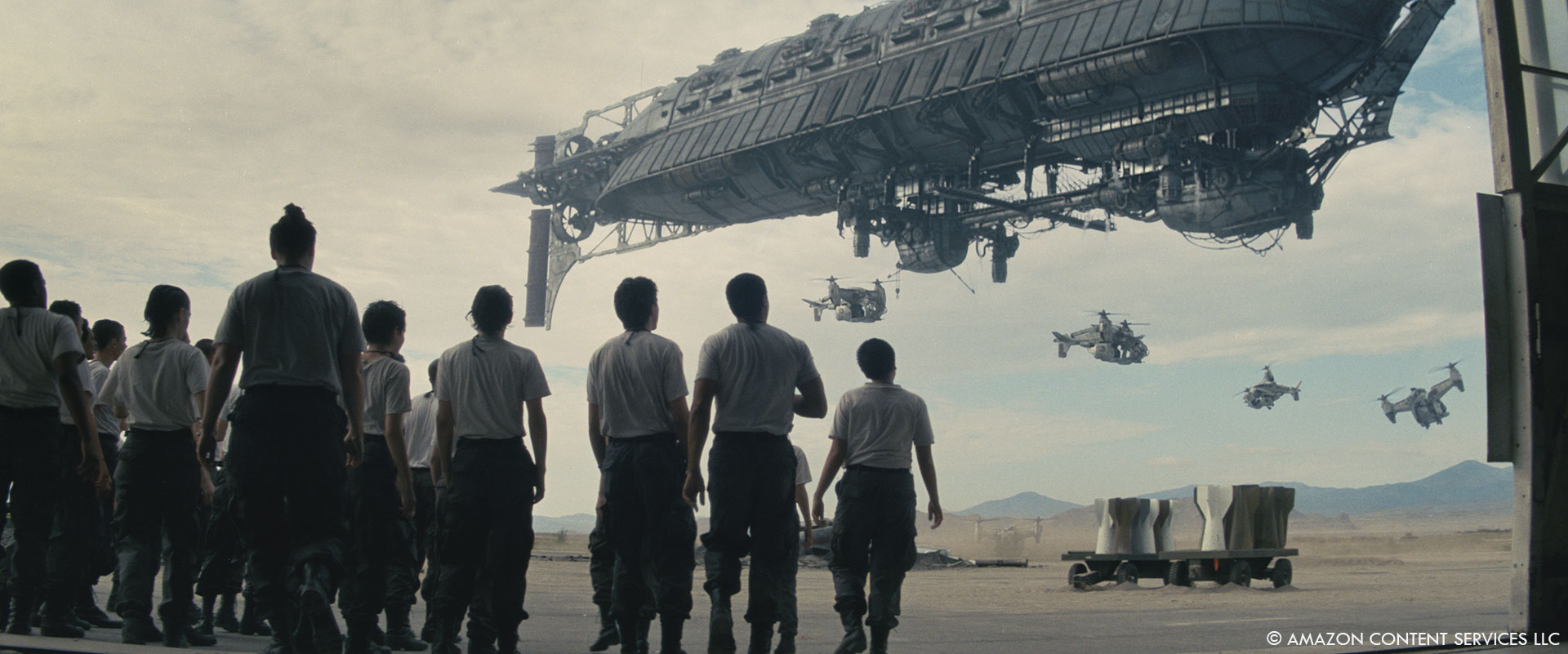
Were there any memorable moments or scenes from the series that you found particularly rewarding or challenging to work on from a visual effects standpoint?
Some of my favorites were the cyclops. Chris Parnell‘s performance was so memorable, we really wanted to make sure we nailed it and that humor and humanity came through. We ended up doing a full CG replace to add his eye, which ended up working really well, but was daunting at the beginning when we were figuring out our methodology. However, once we nailed the look, we really had fun seeing the shots come together. We looked at the sequences hundreds of times while reviewing things and we laughed every time. We are huge fans of the cyclops.
Looking back on the project, what aspects of the visual effects are you most proud of?
One of the most rewarding aspects of our work was the ability to construct a vast, cohesive world. Filming across diverse locations like New York, Utah, and Namibia, and seamlessly transforming them into a post-apocalyptic Los Angeles was a monumental task. This challenge was central to our experience. Additionally, we took pride in tackling the unique challenges that the Fallout universe presents. From the meticulous removal of ghoul’s nose, to the creation of environments, creatures, robots, and vehicles, each element required meticulous execution. These unique and specific shots were crucial in advancing the narrative and enriching the texture of the world we were building.
A big thanks for your time.
WANT TO KNOW MORE?
Framestore: Dedicated page about Fallout on Framestore website.
One of Us: Dedicated page about Fallout on One of Us website.
RISE: Dedicated page about Fallout on RISE website.
Prime Video: You can now watch Fallout on Prime Video.
© Vincent Frei – The Art of VFX – 2024






